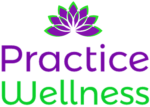Today’s blog is a response to a collection of loosely connected yoga questions that keep coming up in class. If you have ever come across these “ambiguities”, this blog might address them! If you have any other yoga related questions, you can add them as comments below.
“What’s up with the precision alignments?”
Some practitioners wonder why asana (pose) alignments are so precise. Could there be a higher purpose or is the teacher being overly meticulous?
The fact is there is so much packaged in yoga. Asanas together with their specific alignments are somewhat ways into other more philosophical aspects of yoga. They are part and parcel of the Eight Limbs of Yoga, as outlined in Patanjali’s sutras, early yogic texts on morals and ethics for living a meaningful life.
A yoga teacher is required to ensure that alignments are correctly applied so that learners can benefit from the practice, avoid injuries and honour the principles of yoga comprised in the sutras.
In addition, asanas offer plenty of transferrable skills. My teacher used to say “what you learn on the mat, you practice off the mat”. A good example is being conscious of your posture as you sit in lotus pose for an extended period of time. This actually helps you to develop good habits that will benefit you in the long run. Deep breathing techniques in yoga and engaging the bandhas (core and pelvic floor muscles) can also be transferred to other activities, for example, when practicing sports, lifting heavy objects and walking up the stairs.
So next time you practice yoga, think how you can use the same techniques in other situations. Remember, what you learn on the mat, you apply off the mat!
“Is yoga compatible with my faith?”
This can be a real dealbreaker for some people. They might be interested in trying out yoga but are convinced that its ideology is incompatible with their faith, so they steer clear of it.
I was asked on a few occasions whether practicing yoga is worshipping Hindu gods and goddesses. The quick answer is “no”. You can take what resonates with you and leave the rest. People also comment that the names of some asanas, e.g. cobra, conflict with Christianity (with reference to the serpent in the Garden of Eden). In my opinion, they are not mutually exclusive.
Yoga’s roots precede any of the modern-day religions. Hinduism has inherited a lot of yoga ideologies and Hindi has possibly evolved directly from Sanskrit, an ancient language used during the early days of yoga.
That said, it is absolutely possible to practice yoga without subscribing to Hinduism. I am living proof. As a follower of Christ (brought up as Coptic Orthodox Christian), I have embraced yoga as a way to achieve my spiritual development as well as physical and mental wellbeing goals. I am certainly interested in other faiths and cultures, but do not want to adopt any particular religion. This includes choosing not to chant mantras in which Hindu gods and goddesses are revered. I have no problem with mantras that speak of the benefits of yoga, camaraderie between practitioners, magnificence of nature, encouragement for spiritual growth and realisation of Samadhi – union with the Divine.
In short, yoga is for everyone.
“Why is this posture so painful?”
Another topic that keeps coming up in classes and one that my teacher enthusiastically educated me on, is discerning between discomfort and pain.
As we learn certain asanas for the first time, or deepen our practice, discomfort becomes inevitable. Some practitioners tell me the asana is painful when what they really mean is that it’s uncomfortable. Moderate discomfort is no reason to come out of an asana. We have the right tools to deal with such tension, namely, breathing techniques, which can also help us achieve increased flexibility. On the other hand, if there is or was some kind of health condition or injury, it could indeed be pain, in which case, the practitioner should immediately come out of the asana. The teacher can then recommend a modified or alternative asana.
Speaking of flexibility, I have lost count of people who said to me that they are not flexible enough for yoga. This is a common misconception. While increased flexibility is one of the many side-benefits of yoga, it’s certainly not a prerequisite. I often say that yoga is meant for people lacking flexibility and that they should in fact start attending beginner classes if that is their goal. There is a famous saying: “Yoga is not about touching your toes; it’s about what you learn on the way down”.
That’s all I have for today. Thanks for your time. Feel free to add your question or comment below. I will be back with another blog or vlog soon.
For the latest information on my gym and private classes, click here. (New classes added!)
For information on my career coaching and coaching workshops, click here.
Namaste
Sossi



fascinating stuff about Yoga and Faith .
well done
Thank you!! 🙂